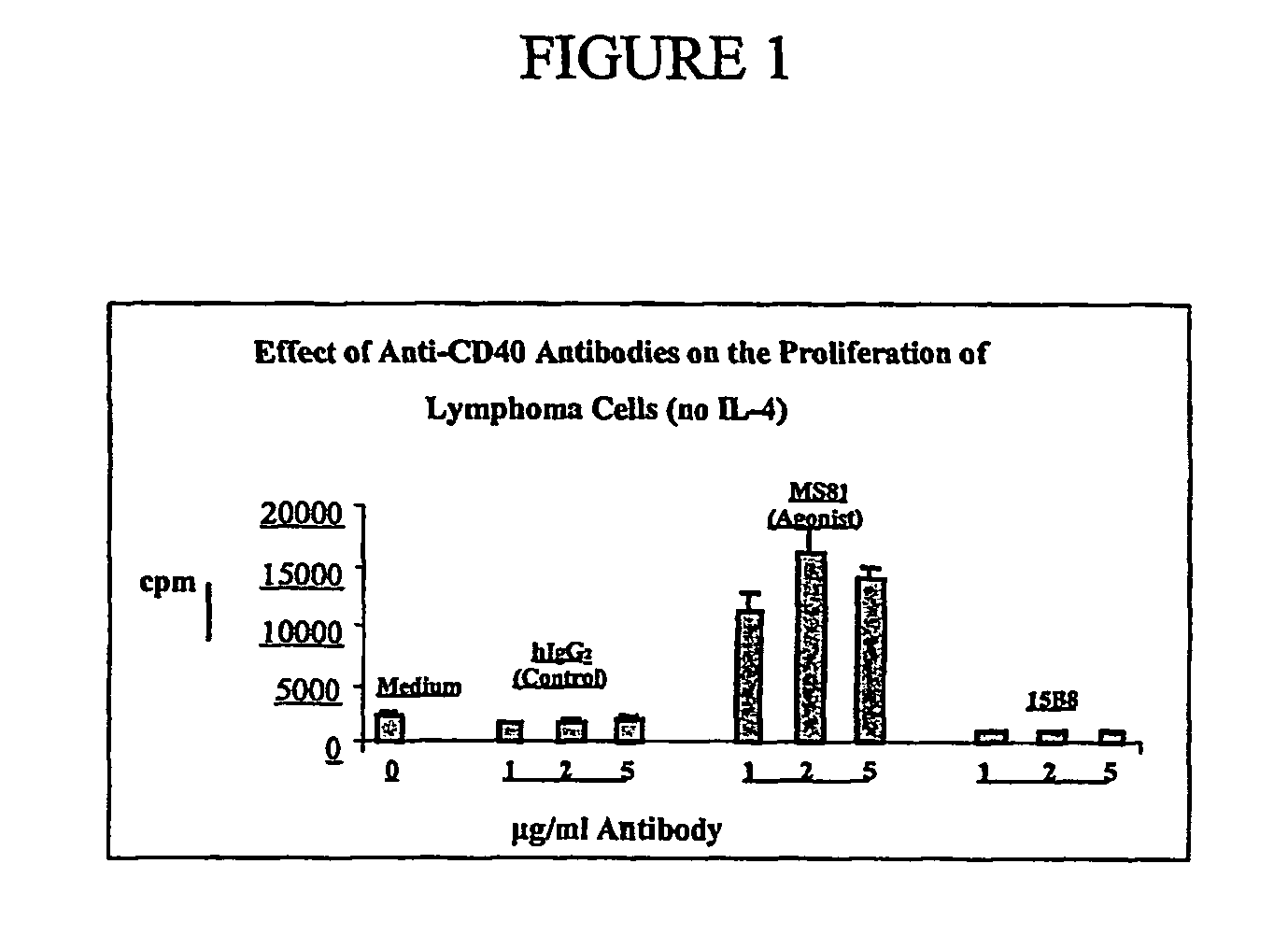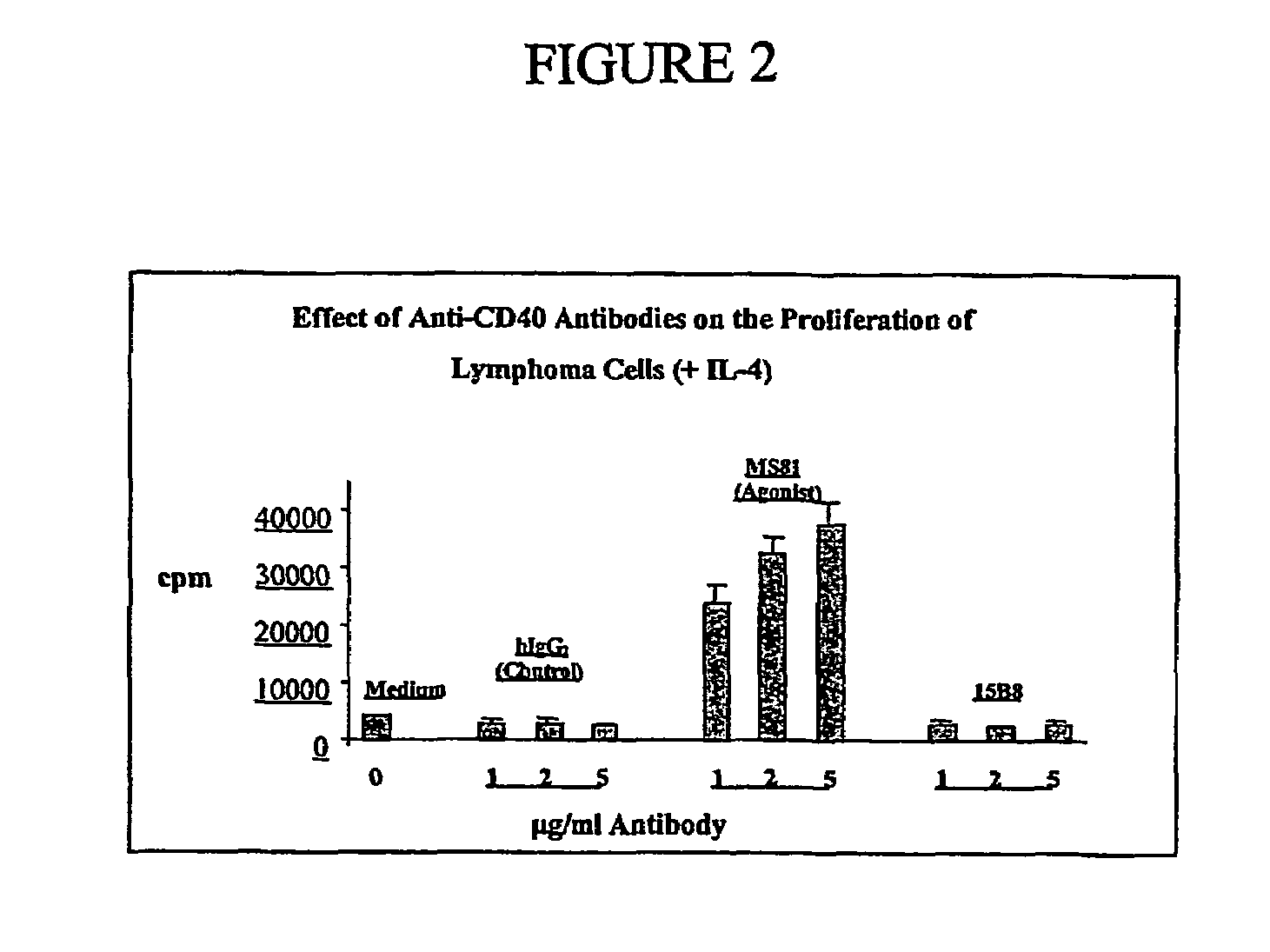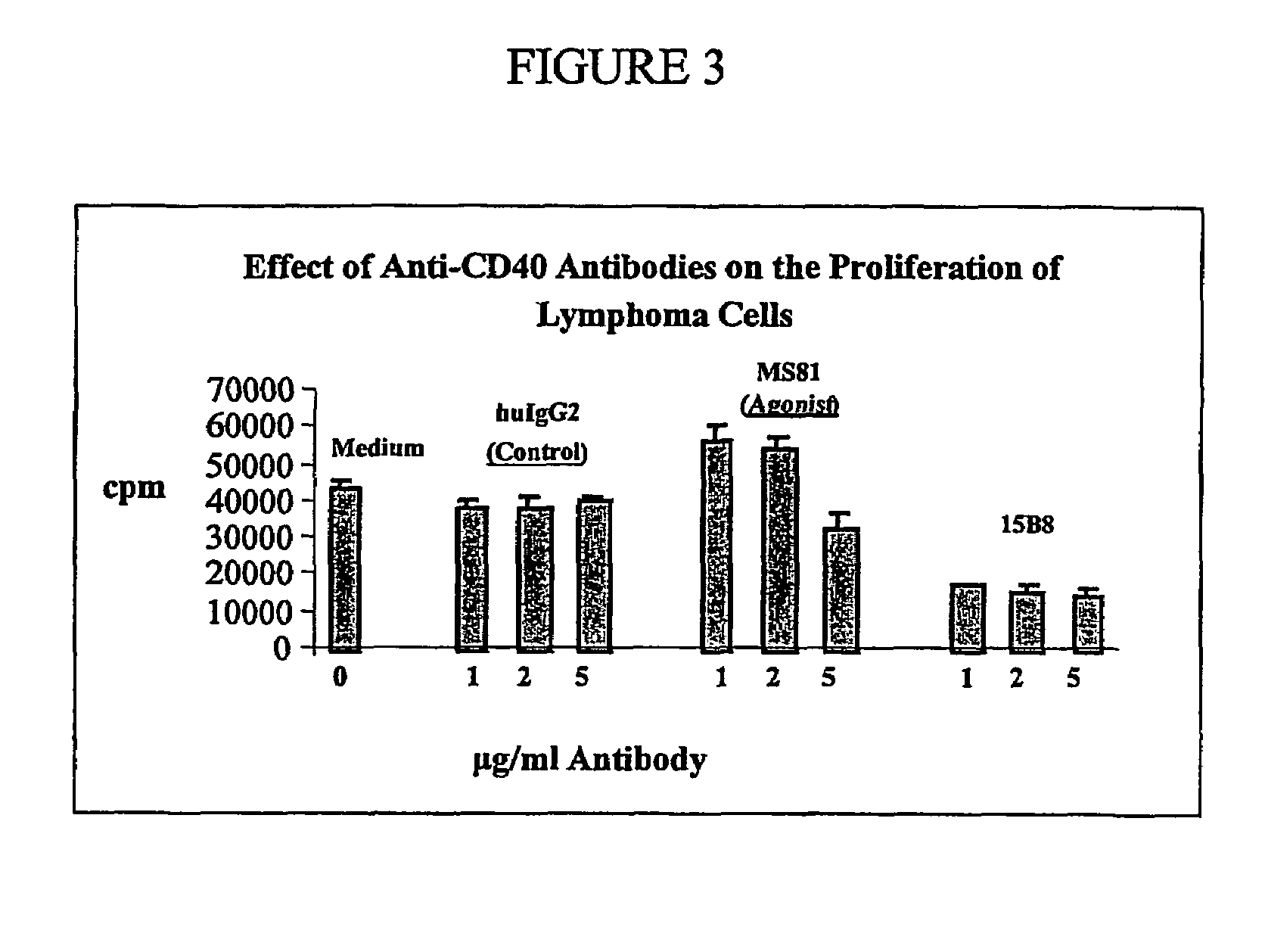Methods of therapy for B-cell malignancies using antagonist anti-CD40 antibodies
an anti-cd40 and b-cell malignancy technology, applied in antibody medical ingredients, immunological disorders, extracellular fluid disorders, etc., can solve the problems of toxicity effects of chemotherapy patients, a large number of patients undergoing chemotherapy can still relapse, and most patients end up recurrence, and achieve the effect of free of significant agonist activity
- Summary
- Abstract
- Description
- Claims
- Application Information
AI Technical Summary
Benefits of technology
Problems solved by technology
Method used
Image
Examples
example 1
Effect of 15B8 on the CD40 / CD40L Interaction In Vitro
[0082]A competitive binding assay was performed to determine if direct competition for CD40 binding is a mechanism of the antagonist activity of 15B8.
[0083]A line of Chinese Hamster Ovary (CHO) cells containing the gene encoding CD40L and expressing CD40L on the cell surface was generated. The CD40L-expressing CHO cells were incubated with purified CD40 before and after incubation of CD40 with 15B8. Fluorescein isothiocyanate (FITC)-labeled anti-huIgG was added to the cells. FACS analysis was performed to detect 15B8 bound to the CHO cells via CD40. The binding of 15B8 to CD40 inhibited the subsequent binding of CD40L to CD40. However, when CD40L and CD40 were incubated together prior to the addition of 15B8, 15B8 was subsequently able to bind CD40. While not bound by any mechanism of action, this suggests that 15B8 does not compete directly with CD40L for binding sites on CD40, and that the binding of 15B8 to CD40 possibly caused...
example 2
Pharmacologic Action of 15B8 in Lymphoma Cells from NHL Patients
[0084]To demonstrate the potential efficacy of 15B8 in a preclinical in vitro model of non-Hodgkin's lymphoma (NHL), 15B8 was tested using malignant B cells (NHL cells) obtained from NHL patients who were either Rituximab-treated or naïve. Rituxinab (IDEC-C2B8; Rituxan®; IDEC Pharmaceuticals Corp., San Diego, Calif.) is an anti-CD20 monoclonal antibody for the treatment of relapsed or refractory low-grade or follicular NHL.
[0085]Since primary lymphoma cells do not proliferate in regular culture medium and undergo apoptosis after a few days in culture, tumor cells were co-cultured with irradiated CD40-ligand (CD40L) transfected feeder cells (Arpin et al. (1995) Science 268:720-722) in the presence or absence of the B-cell growth factor interleukin-4 (IL-4). Antibodies (agonist anti-CD40 MS81, antagonist anti-CD40 15B8, or isotype control human IgG2 (huIgG2)) of indicated concentration (from 0.01 μg / ml to 10 μg / ml) were t...
example 3
Effect of 15B8 on Malignant B-Cell Proliferation In Vitro
[0089]To test if 15B8 provides the growth signal like CD40L in vitro, B cells from tumor infiltrated lymph nodes (NHL cells) were obtained from one antibody naïve, one Rituximab-sensitive and one Rituximab-resistant NHL patient. The NHL cells were studied under four different culture conditions: no added antibody (medium); addition of human isotype antibody IgG2 (control; referred to as huIgG2); addition of anti-CD40 antibody MS81 (agonistic antibody); and addition of 15B8. All antibodies were tested at 1, 2, and 5 μg / ml in the presence or absence of IL-4. The NHL cells from two patients were cultured as described above under the same four conditions in the presence of IL-4 (2 ng / ml). B-cell proliferation was measured by 3H-thymidine incorporation as described above.
[0090]Anti-CD40 antibody 15B8, at concentrations of 1, 2, and 5 μg / ml, did not stimulate NHL cells to proliferate in either the absence or presence of IL-4. In con...
PUM
| Property | Measurement | Unit |
|---|---|---|
| dissociation constant | aaaaa | aaaaa |
| dissociation constant | aaaaa | aaaaa |
| concentration | aaaaa | aaaaa |
Abstract
Description
Claims
Application Information
 Login to View More
Login to View More - R&D
- Intellectual Property
- Life Sciences
- Materials
- Tech Scout
- Unparalleled Data Quality
- Higher Quality Content
- 60% Fewer Hallucinations
Browse by: Latest US Patents, China's latest patents, Technical Efficacy Thesaurus, Application Domain, Technology Topic, Popular Technical Reports.
© 2025 PatSnap. All rights reserved.Legal|Privacy policy|Modern Slavery Act Transparency Statement|Sitemap|About US| Contact US: help@patsnap.com



